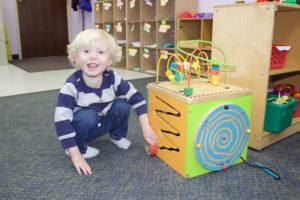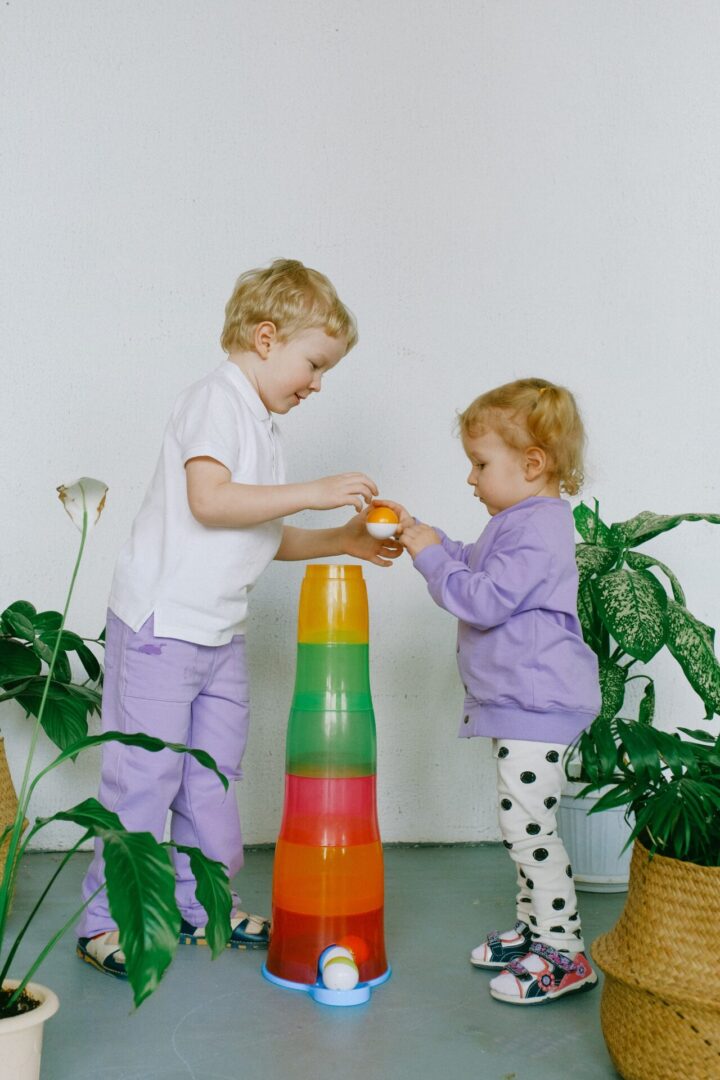Our Targeted Therapy Plan for Disabled Children
Occupational therapy is an intervention that enhances a child’s ability
To successfully function within their environment and can be an important component of both an early intervention program and ongoing therapy.
In early intervention, occupational therapy plays a key role in helping children from birth to age 3 who are facing physical delays, cognitive delays, or sensory processing disorders that may affect their development—helping with sensory development, fine motor skills, visual perception, and visual-motor skills. Occupational therapy can be valuable for children with various disabilities, including autism spectrum disorders, cerebral palsy, Down syndrome, and ADHD.

For children with developmental delays
Occupational therapy can help improve their motor, cognitive, sensory processing, communication, and play skills. You can find out more if you visit the website about how this works, but we’ve gone into light detail below.
Through the therapeutic use of activities to help children perform everyday tasks (such as eating, dressing, and playing), the goal is to enhance development, minimize the potential for developmental delay, and help children learn the skills needed for daily life.


Since a child’s “occupation” is playing
Occupational therapists provide fun and innovative age-appropriate activities to teach new skills. There are a number of areas that occupational therapists focus on to help children with disabilities enhance their everyday skills, including:
-
Play – Interacting with age-appropriate toys, games, equipment, and activities.
-
Sensory Processing Integration – Ability to process and respond to sensory information within the environment.
-
Upper Body Development and Fine Motor Development – Strengthen and refine motor development skills in order to access and manipulate various educational materials, toys, and objects encountered by the child during everyday activities.
-
Education – Achieving in the learning environment.
-
Social Participation – Developing appropriate relationships and engaging in behavior that doesn’t interfere with learning, self-help, self-care, or social relationships.
At LifeROOTS, our occupational therapy program begins with a full, comprehensive assessment of your child to evaluate current skills and needs in order to create a program to best meet each child’s individual needs. Our team of experienced occupational therapists then works closely with each child on an individualized plan to meet the child’s needs, incorporating fun and engaging activities that families can also do with the child at home, so the child can continue his/her progress.
Although every occupational therapy plan is unique, all are designed to meet the goals of helping each child accomplish new things and enhance their everyday living. A plan might include the use of special adaptive equipment, such as specialized food utensils and writing tools or devices that help them complete tasks in everyday life.

Occupational therapists specialize in breaking down a goal
In addition, helping each child gain the skills and function needed to complete a task. For example, for children who need help with writing and using a pencil properly, occupational therapists often work on activities to improve finger strength (such as playing with play-dough), as well as working on fine motor control by playing certain games, as well as coloring and using a paintbrush to help develop the strength and skills needed for writing.
In addition, since the key to success is often repetition, occupational therapists work to create activities to make it fun for the child, with families able to help them practice at home.
Although all children develop at their own pace
The following are some of the signs that your child may benefit from occupational therapy in the following areas:
-
Issues With Fine Motor Skills, Including Difficulty With:
-
Manipulating toys and puzzles
-
Holding a pencil
-
Using silverware or straws at an age-appropriate time
-
Using scissors
-
Using zippers, buttons, shoelaces
-
Coloring, drawing, tracing, prewriting shapes
-
Poor handwriting, letter/number formation
-
Not developing a hand dominance at an age-appropriate time
-
Avoiding tasks and games that require fine motor skills
-
Issues With Gross Motor Skills, Including Difficulty With:
-
Going up and down the stairs at an age-appropriate time
-
Coordinating both sides of the body
-
Understanding the concept of right and left
-
Poor ball skills
-
Poor balance
-
Issues With Visual Processing, Including:
-
Difficulty with the spacing and sizes of letters
-
Difficulty with recognizing letters
-
Difficulty with copying shapes or letters
-
Difficulty with visual tracking and crossing midline
-
Difficulty finding objects among other objects
-
Difficulty with copying from the board or another paper
-
Difficulty with the concept of right and left
-
Issues With Oral Motor/Oral Sensory, Including:
-
Excessive drool
-
Chews food in the front of the mouth, rather than on the molars
-
Difficulty using a cup at an age-appropriate time
-
Difficulty with drinking from a straw at an age-appropriate time
-
Lengthy bottle or breastfeeding
-
Tiredness after eating
-
Baby loses excessive liquid from his or her lips when bottle or breastfeeding
-
Child loses excessive liquid or food from his or her mouth when drinking or chewing
-
Child appears to be excessively picky when eating, only eating certain types or textures of food
-
Child excessively mouths toys or objects beyond an age-appropriate time
If you are concerned about your child’s development in any of these areas, call LifeROOTS at (505) 255-5501 to learn more about our occupational therapy services or to schedule an evaluation with one of our occupational therapists to see how our OT program can help your child reach his/her full potential.

